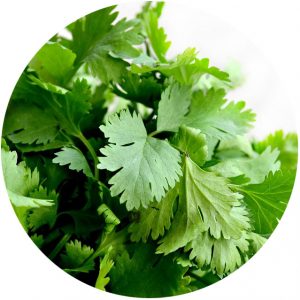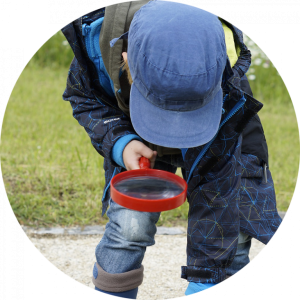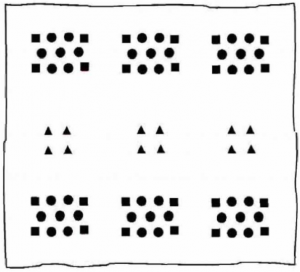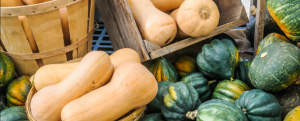 Students explore a variety of plant-derived aromatic substances, reflect on the memories and feelings they evoke, and describe them. Next, as they try to taste without using their sense of smell, they begin to grasp the importance of this remarkable adaptation. They also learn that scents provide plants with a way to communicate, aid in reproduction and seed dispersal, and protect themselves. For grades 3-5, adaptable for other ages. View Resource »
Students explore a variety of plant-derived aromatic substances, reflect on the memories and feelings they evoke, and describe them. Next, as they try to taste without using their sense of smell, they begin to grasp the importance of this remarkable adaptation. They also learn that scents provide plants with a way to communicate, aid in reproduction and seed dispersal, and protect themselves. For grades 3-5, adaptable for other ages. View Resource »
Scavenger Hunt in the Garden
 Although the garden provides many opportunities for exploration, sometimes it helps if kids have some direction to begin their observations. A scavenger hunt can provide a little bit of structure while still offering the flexibility for individual discovery. View Resource »
Although the garden provides many opportunities for exploration, sometimes it helps if kids have some direction to begin their observations. A scavenger hunt can provide a little bit of structure while still offering the flexibility for individual discovery. View Resource »
The Soil Story Curriculum
 The Soil Story Curricular Guide is designed to educate middle school students about the cycling of matter and the flow of energy among living and nonliving parts of an ecosystem. Each of the five lessons supports students with understanding how carbon, as a form of matter, moves to and from various reservoirs on Earth. Building on what the Next Generation Science Standards (Achieve, 2013) suggest students know by the end of fifth grade, this unit engages middle school learners in using a visual model to explain interactions that occur when matter cycles between the geosphere, hydrosphere, biosphere, and atmosphere. View Resource »
The Soil Story Curricular Guide is designed to educate middle school students about the cycling of matter and the flow of energy among living and nonliving parts of an ecosystem. Each of the five lessons supports students with understanding how carbon, as a form of matter, moves to and from various reservoirs on Earth. Building on what the Next Generation Science Standards (Achieve, 2013) suggest students know by the end of fifth grade, this unit engages middle school learners in using a visual model to explain interactions that occur when matter cycles between the geosphere, hydrosphere, biosphere, and atmosphere. View Resource »
The Three Sisters
 This comprehensive project (designed for 5th graders) incorporates concepts of plant physiology, companion planting, ecology, history, and ethnobotany. It links to Next Generation Science Standards and is written to span two school years, but concepts could be adapted for shorter lessons. View Resource »
This comprehensive project (designed for 5th graders) incorporates concepts of plant physiology, companion planting, ecology, history, and ethnobotany. It links to Next Generation Science Standards and is written to span two school years, but concepts could be adapted for shorter lessons. View Resource »
A similar lesson for younger students can be found here.
Want to cook with your Three Sisters harvest? Here’s a recipe!
Traditional Foods in Wisconsin
 Wisconsin is home to indigenous and traditional foods from many cultures. Traditional foods increase participation, fruit and vegetable consumption, and students’ knowledge and awareness of the food and culture Wisconsin has to offer. This resource supports the incorporation of traditional foods. View Resource »
Wisconsin is home to indigenous and traditional foods from many cultures. Traditional foods increase participation, fruit and vegetable consumption, and students’ knowledge and awareness of the food and culture Wisconsin has to offer. This resource supports the incorporation of traditional foods. View Resource »
